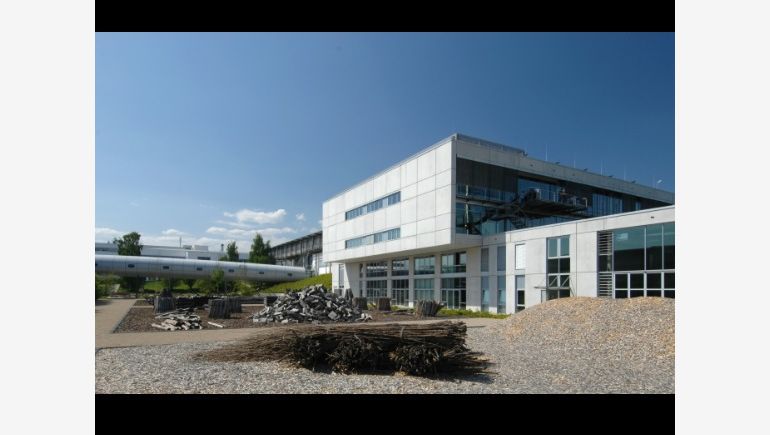Operating costs are at least as much, or even more important than investment costs. It also concerns the problem of heating up and cooling the object. A system, cheap during installation and implementation, can later become more troublesome and generate additional costs. Additionally, unstable conventional fuels market makes us want to look for alternative solutions, which will let us resign from heating with coal or oil.
Renewable energy - a heat pump
Rising awareness of the developers and investors, together with bigger knowledge of using renewable energy - also in the case of large-scale objects - causes an interest in unconventional solutions. Modern heat pumps need minimum electric energy to heat up and cool even large objects, such as office buildings. They also do not need any fuel - a warmth source can be air, water or earth. Heat pumps meet really well the expectations of large-scale, air-conditioned objects such as office buildings, hotels and shopping centres, basically places, where there are many people – says Dawid Pantera, expert of Viessmann company. Because in the summer months there is a large demand for cold, even larger that demand for warmth in winter, the best solution is to use something, which can cover energetic demand of the building during the whole year – he adds.
The main element of heat pump is a compressor, and electric energy is only used to propel it. According to the producers' calculations, 1 kW of electric energy allows for having 4 kW of warmth.
How does it work?
A heat pump uses free energy taken from the natural environment. Solar heat accumulated in the ground, ground water or in atmospheric air (described with a term "bottom heat sources") with the aid of electric energy is transformed into heating. More accurately: in the evaporator, natural environment energy is given to intermediate fluid, circulating in the heat pump. That fluid evaporates and takes some of the warmth from natural environment. Next, evaporated fluid is sucked in by the compressor, where it is compressed, which means that its pressure and temperature rise.
Vapor with an increased pressure and temperature is now directed to a condenser, where it is condensed and it gives warmth to heating water, feeding central heating installation of the building (upper heat source). After fiving away the heat in the condenser, intermediate fluid flows through an expansion valve, where it regains initial parametres, low pressure and temperature. It again is evaporated in the evaporator and the cycle repeats.
Inside the building, heat can be distributed through the means of water, sometimes air. Heating can be realised by low-temperature installation, for example floor, wall of ceiling heating, even by traditional heaters. What is much more important is the bottom heat source, which influences the parametres and effectiveness of the system. It is a place from which the equipment draws energy. Pumps, made specially for large objects, can draw heat from basically any source having temperature from -25°C to +40°C. It can be ground, ground water, surface water, atmospheric air, air from the vetilation system and so-called waste heat (for example from municipal sewage). it seems that the best and the most accessible heat source is air. However, it is important to remember that when temperature outside is lower, the effectiveness of the equimpent will also be lower. This is why in installations such as these, an additional heat source is needed. The specialists recommend ground-coupled heat exchangers, which allow for the stabilisation of heating and cooling processes, regardless of the conditions outside. On the depth of 1.5 to 5 metres underground, there is fixed temperature, no matter which season it is - from 8 to 12°C. Ground water has similar characteristics, with a fixed temperature all over the year, about 10°C. Also surface water can be used that way, for example natural lakes or specially digged ponds, which can be incorporated into plans concerning buildings around the office building. When using water, it is important to remember the problems, caused by its possible pollution, which negatively affects the system's effectiveness. This is why additional systems, protecting the heat pump from the pollution are often used. This can be, for example, an additional heat exchanger, so-called intermediate heat exchanger.
An interesting improvement, which may interest owners or administrators of office buildings, can be systems which let make full use of the building's own energy, produced by, for example, human bodies, equipment (computers, ventilation) or the heat produced by lighting. This energy can be seized and used to reheat the object - in that case the systems is working similarly to mechanical ventilation with heat recovery option.
- 1
- 2

